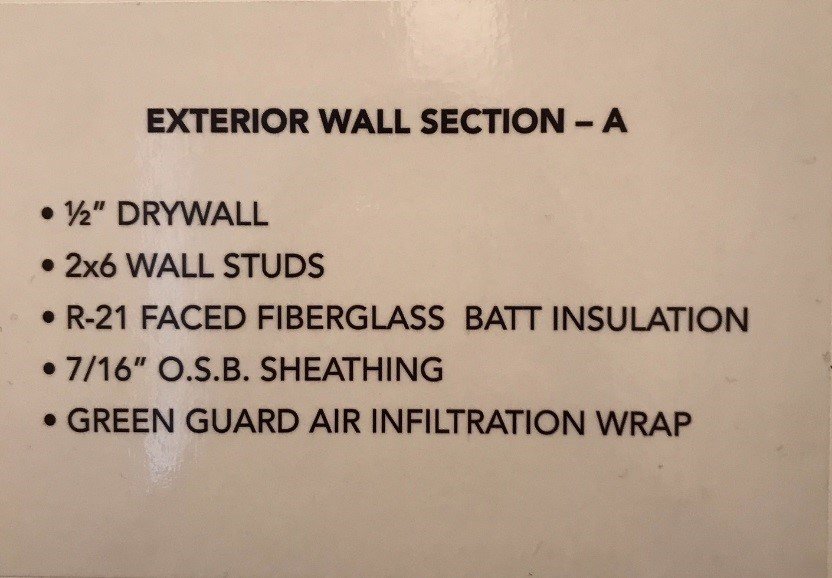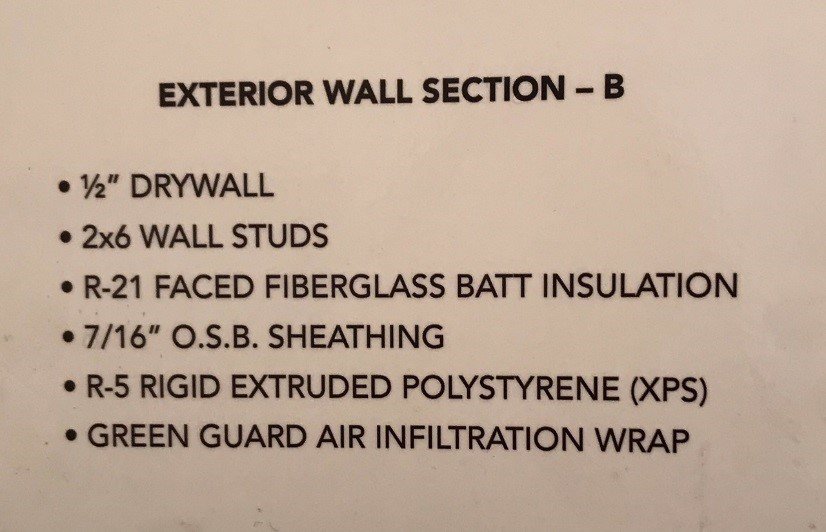Simplex Homes offers several different wall insulation options…from standard to high performance. We have five different wall construction options on display in our Greenfield II model home in Scranton, PA (see images A-E). These different construction techniques offer insulation values ranging from R-21 to R-30+. Many northern states are implementing additional requirements for exterior wall insulation values. Most options shown in our display model exceed these requirements. Stop by our facility to see these samples firsthand…
Tips for Choosing the Right Wall Insulation for Your Home
Wall insulation will prevent heat from escaping your home during the winter and sneaking into your house in the summer. It can make your home more energy efficient, lower your energy bill, and keep you more comfortable throughout the year.
Types of Wall Insulation
You may be familiar with batting, the type of insulation comes in rolls and is often used for the attic. While this same material can be used for walls, it’s usually for new construction, when the wall cavity is exposed before drywall is put in place.
For existing walls, the most common types of insulation are loose-fill or blow-in insulation and spray foam insulation. The installation process is similar for both types.
Let’s take a look at each type.
Loose-Fill or Blow-In Insulation
The most common materials for loose-fill or blow-in insulation are recycled:
- Cellulose, which is recycled newsprint
- Fiberglass, made of 20% to 30% recycled glass
- Mineral wool, made of 75% post-industrial recycled content
One benefit to choosing this type of insulation is that it conforms to the space it fills.
Spray Foam Insulation
Spray foam insulation is made of polyurethane, a synthetic material, or other types of polymers. It can be sprayed or injected into walls and it expands to fill the wall cavity – even the smallest crevices – and eventually hardens.
This type of insulation has higher R-values, but it’s typically more expensive than loose-fill insulation. It also requires special equipment to install.
Not Just for Exterior Walls
Wall insulation doesn’t just make for comfortable temperatures in your home. It can also lead to privacy, particularly in the case of interior walls.
We’ve all heard embarrassing or just plain annoying sounds from our families and house guests through the walls. Wouldn’t it be more pleasant for everyone if we didn’t hear such things?
Insulation can also be installed in interior walls. Not only does it act as a noise barrier, but it adds to the physical comfort of your home.
Read more on our blog to compare different types of home insulation, around how much it may cost, and about how much you can save.
Article Source: https://www.renovateamerica.com/blog/choosing-wall-insulation-for-your-home


